In this article, we will explore emerging trends in the Rollup market, its future trajectory, and potential investment opportunities. The discussion focuses on several key topics:
- What is Rollup Summer?
- Case Studies: ZKFair and Manta
- Projecting the Evolution of Rollup Summer
- Opportunities in the Secondary Market: Investing in the Rollup Summer Narrative
The insights offered herein represent a snapshot of my analysis, framed by the knowledge available at the time of writing. The analysis is mainly from a business standpoint, with less emphasis on the technical specifics of Rollup. There may be factual inaccuracies or biases. This article is intended for discussion purposes only, and feedback is welcomed.
Contents
What is Rollup Summer?
Echoing the Defi Summer of 2020 and Inscription Summer in 2023, the term ‘Rollup Summer’ has been coined to forecast a significant surge in Rollup technology adoption. This expected trend goes beyond merely an increase in the number of Rollup projects; it’s projected to include substantial growth in key business metrics such as Total Value Locked (TVL), user engagement, and the expansion of the Rollup ecosystem. While there are early indicators, as of now, this concept remains largely a theoretical forecast.
The hallmarks of Rollup Summer include:
- The initiation and launch of a myriad of new Rollup projects and application chains,
- An influx of users, capital, and developers into the Rollup ecosystem, surpassing the rate of the previous year
- A synergy between business metrics and asset values, driving a swift increase in the overall market value of Rollup sectors and associated projects
Rollup Summer is anticipated to start towards the end of 2023 and early 2024, potentially evolving into a significant theme spanning half a year or even longer.
The driving force behind Rollup Summer is:
The Flywheel Effect Generated by New Rollups
While Rollups are not a new concept, with established players like Arbitrum and Optimism demonstrating significant market presence, Similarly, other ZKRollups such as Starknet and zkSync have been in operation for a considerable period.
The spotlight during Rollup Summer is expected to shine on the new Rollup projects of this cycle, driven by several key factors:
- The Concept of Modular Blockchains Gains Traction: The idea of modular blockchains has been widely embraced, streamlining the infrastructure for Rollup components. Developments like the OP stack, Celestia (DA layer), decentralized sequencers, and various Rollup-as-a-Service (RaaS) offerings are enhancing the feasibility of developing and sustaining a Rollup on a modular foundation.
- Bold Strategies by New Rollups: With substantial budgets for initial launches and incentives, these new Rollups are adopting aggressive tactics in token distribution and incentives. This approach is generating heightened interest among users and investors.
- Significant Growth Potential: The relatively lower market value at the start of these new projects creates opportunities for substantial growth.
- A Favorable Market Climate: The current bullish market and optimistic sentiment are acting as catalysts, further propelling the interest and growth in the Rollup space.
In essence, the new wave of Rollups is characterized by a combination of novel projects, tokenization strategies, modular blockchain designs, and generous incentive programs. These elements collectively contribute to accelerated momentum in both initial business activities and token pricing dynamics.
The momentum of ‘Rollup Summer’ might be initially driven by token airdrop campaigns. These campaigns draw in user assets, elevating crucial business metrics like TVL, which in turn boosts the market cap of the projects.
The next phase could involve token ecosystem airdrop schemes, directly subsidizing decentralized applications (dApps) within the ecosystem, indirectly benefiting the users as well. The result is a further influx of user assets, enhancing core metrics like TVL, active users, and gas fees. This step amplifies the project’s market cap and can lead to newer Rollups outperforming their older counterparts. The rapid success and visibility of these new Rollups can trigger market FOMO (Fear of Missing Out).
The Cancun Upgrade
The Ethereum Cancun upgrade, scheduled for February, is another pivotal factor contributing to the Rollup Summer phenomenon, particularly enhancing the prospects of established Rollups like Arbitrum and Optimism. This upgrade is expected to significantly lower the Layer 1 cost for Rollups and see an expansion in their profit margins. The Cancun upgrade will capture the entire market’s attention, spotlighting the Rollup arena, and funneling both attention and capital toward the new Rollup projects.
Case Studies of New Rollups: ZKFair and Manta
In analyzing the operational frameworks and distinguishing features of new Rollups, ZKFair, and Manta emerge as significant case studies, embodying the spirit of this Rollup Summer.
ZKFair
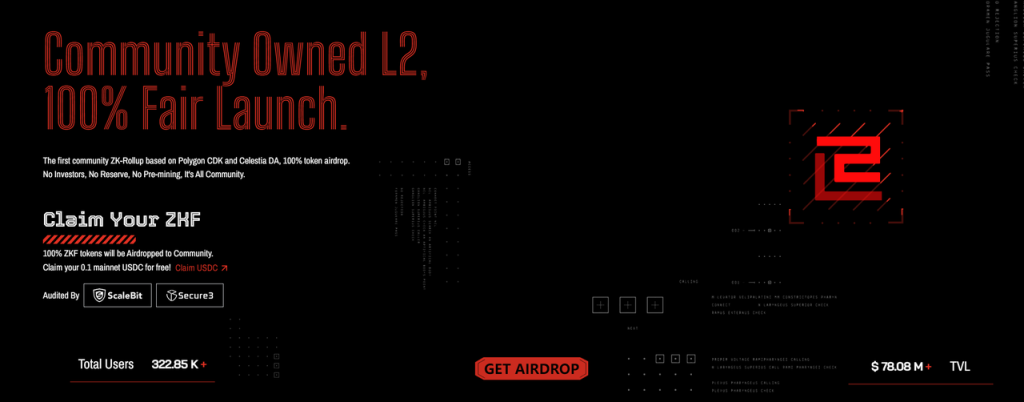
ZKFair’s Key Features as a Rollup include:
- Built on Polygon CDK: ZKFair has been built on the Polygon Chain Development Kit and employs Celestia for its Data Availability (DA) layer, which is managed by an in-house data committee. Moreover, ZKFair is compatible with the Ethereum Virtual Machine (EVM).
- USDC is utilized as the Gas fee.
- The native token of ZKFair, ZKF, is entirely allocated to the community. A notable 75% of ZKF tokens are distributed in four phases within 48 hours, targeting those participating in gas consumption activities. In essence, participants engage in the token’s initial market sale by paying Gas to the official sequencer, with the primary market’s fundraising evaluation at just $4 million.
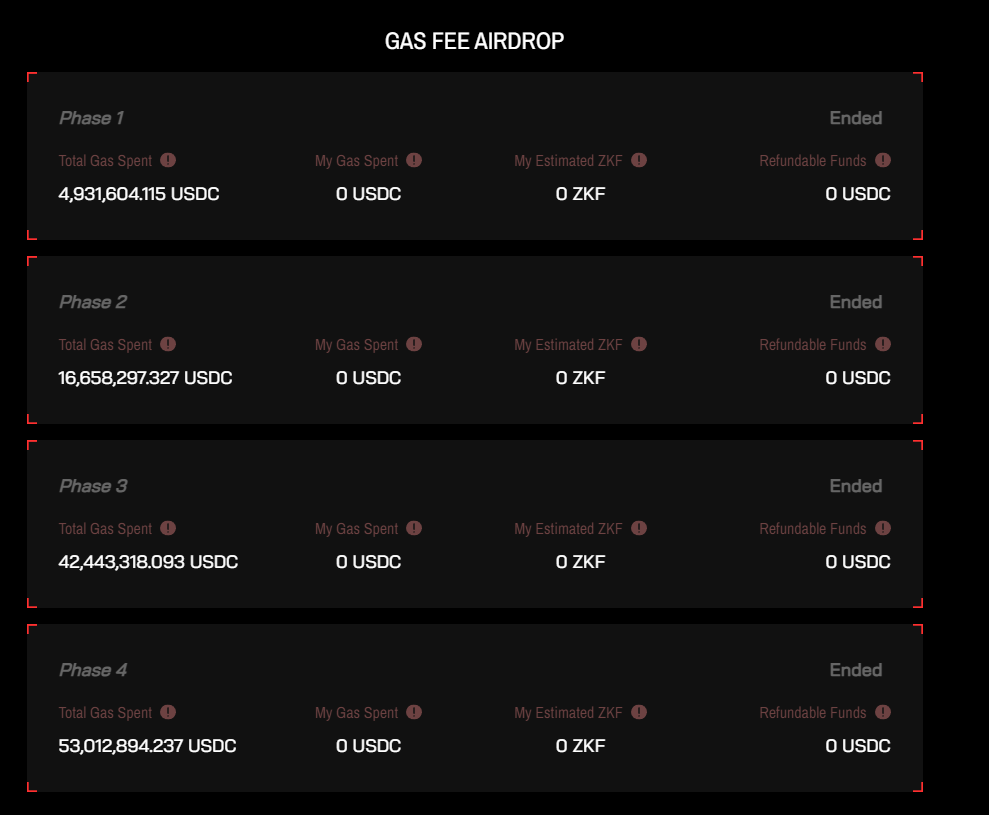
- ZKFair commits to returning 100% of its operational profits to the community. The distribution of profits is well-structured, with 75% allocated to ZKF LP (Liquidity Provider) stakers and 25% to the eligible dApp developers. The Profit here is defined as total fees minus operational costs, which include expenses for essential Rollup infrastructure like explorers and oracles.
The distribution of $ZKF based on the total Gas consumption ratio during the event turned the sale into a competitive ‘battle of capital’. A large number of users to bridge USDC to ZKFair mainnet, actively engaging in the campaign. During the airdrop period, ZKFair experienced a meteoric rise in on-chain TVL, soaring from zero to approximately $140 million in just 2-3 days. This remarkable growth rivaled that of Starknet, a top ZKRollup project at the time. Even Post-airdrop, ZKFair has managed to maintain a Total Value Locked (TVL) exceeding $70 million, surpassing Scroll, another earlier launched ZKRollup project.
ZKFair’s operational strategy presents several clear advantages:
- Rapid Market Entry and Popularity Surge: ZKFair’s TVL soared from zero to over $100 million within just three days and maintained a TVL of over $70 million. With over 334,000 addresses participating, ZKFair ranks among the fastest-growing Rollups in terms of user adoption.
- Immediate Token Utility and Value Addition: The model where sequencer fees are allocated directly to users and developers not only incentivizes participation but also enhances the intrinsic value of $ZKF.
ZKF’s Fully Diluted Valuation (FDV) is currently around $100 million. When compared horizontally with other Rollups, its market value is still relatively modest.
Manta
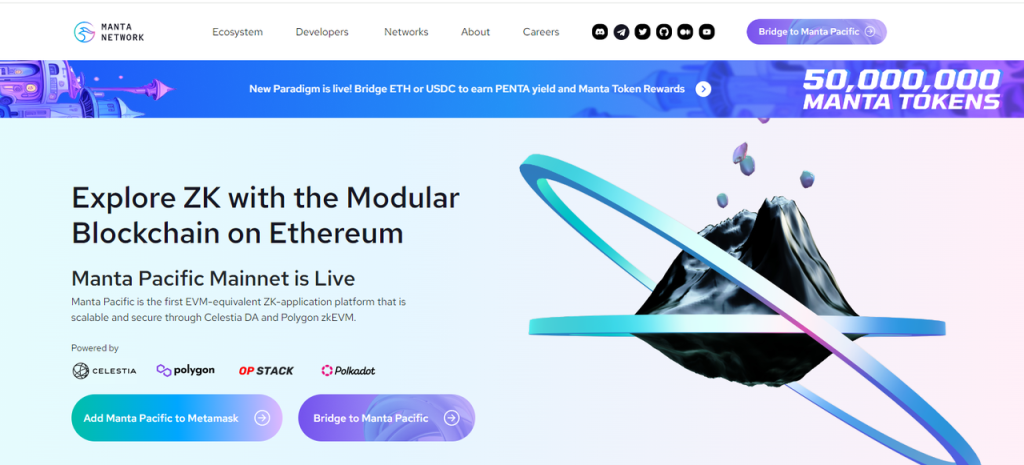

Key Features of Manta Rollup:
- Manta utilizes Celestia for its DA layer and Polygon’s zkEVM for ensuring EVM compatibility.
- Manta offers an extensive range of products beyond Rollup, particularly featuring a suite of services built on Zero-Knowledge (ZK) technology.
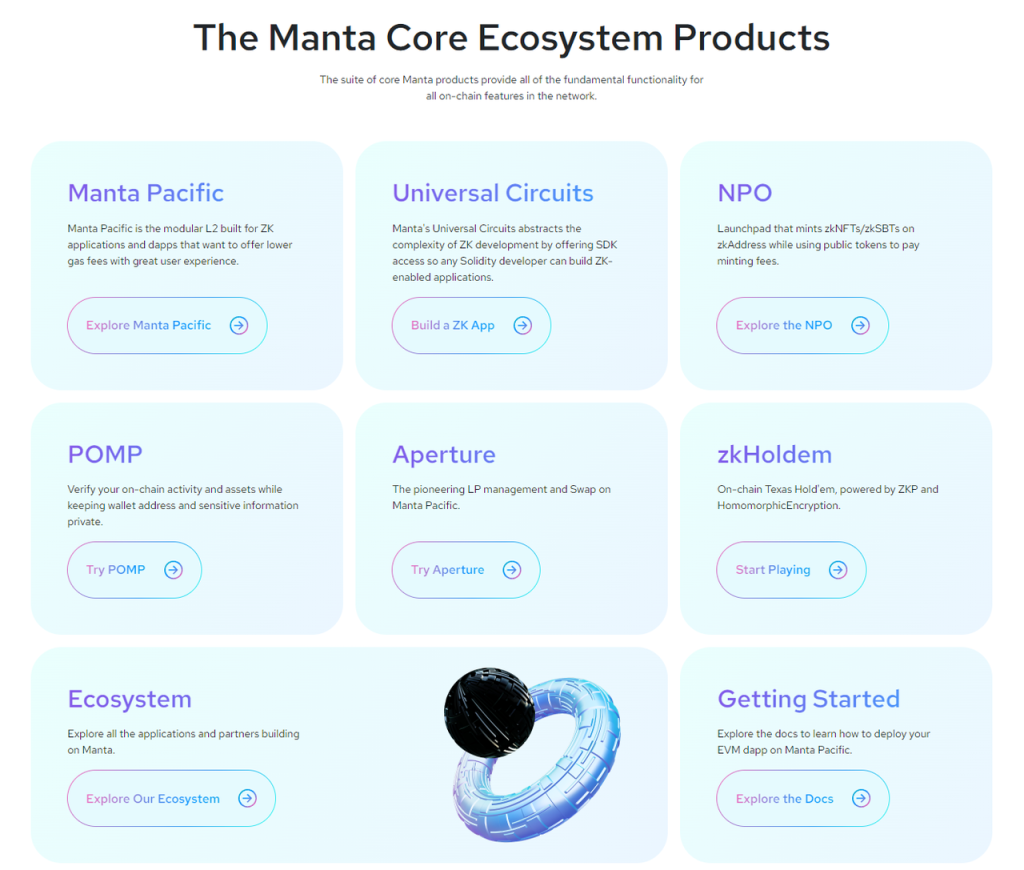
Manta’s Rollup was officially launched in September 2023, marking its entry into the competitive Rollup market. A significant increase in business activity was observed following the introduction of a ‘new paradigm’ event in mid-December. As per the latest official data, Manta’s TVL has approached an impressive $750 million.

The following graph depicting Manta’s TVL highlights a significant growth inflection following the “New Paradigm” event, indicating a strong market response to its offerings and strategies.

Moreover, Manta boasts a stellar lineup of investors, with its latest funding round being valued at $500 million.
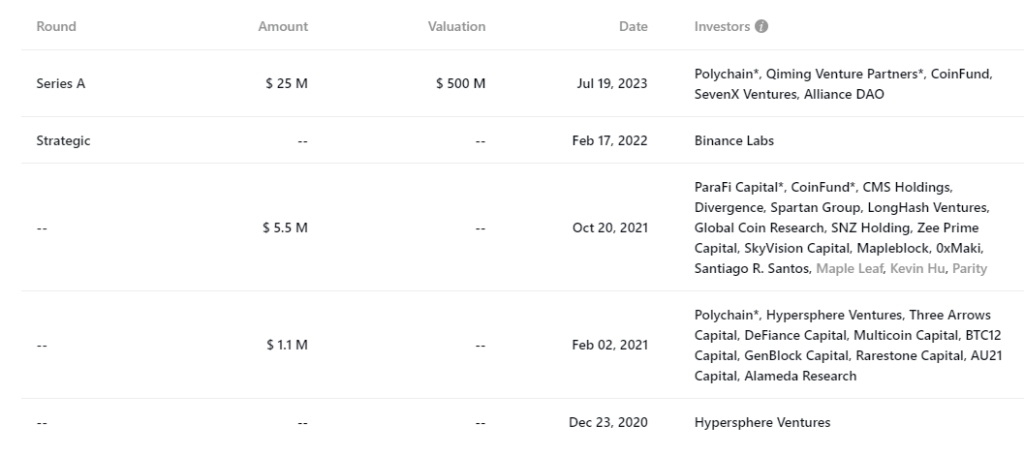
The New Paradigm Event operates on a straightforward concept, enhancing Blur’s blast mode. Here’s a detailed look at its operational concept and expected impact:
- It incentivizes the tranfers of funds across chains by offering Manta tokens as rewards. This strategy aims to drive a rapid increase in TVL.
- Users transferring assets cross-chain are guaranteed at least a basic crypto-world interest rate, which combines the Ethereum PoS yield with treasury bond yields provided by stablecoin issuers. This approach minimizes the opportunity cost of capital for users.
- Airdrop incentives are designed to encourage users to engage with dApps on the Manta platform post-cross-chain transfer. This not only drives user activity but also bolsters developer confidence in the ecosystem.
New Paradigm will distribute 45 million Manta tokens, representing 4.5% of the total supply, to NFT holders. Based on the current secondary market data for NFTs (as of January 5, 2024), the estimated FDV of Manta post-token launch is projected to be between $1.5 and $2.5 billion.
Beyond ZKFair and Manta, a plethora of similar new Rollups are making their mark, such as the earlier-launched Blast and Layer X, which merges elements from both ZKFair and Manta.
Additionally, existing ZKRollup projects like Scroll and zkSync, which have yet to issue their tokens, are well-positioned to adopt frameworks similar to those of ZKFair and Manta. This adaptation could include implementing clearer token reward mechanisms, potentially attracting more users and capital to their ecosystems.
Projected Developments Following Rollup Summer
As we project the developments following Rollup Summer, we can map out the likely path and challenges for the Rollup market:
- New Rollup projects are expected to launch and quickly gain momentum, driven by strategies such as token airdrops and engagement campaigns. These methods will likely lead to optimistic market expectations, fueled by rapid increases in data and enhanced mechanisms, which are already in progress.
- As these Rollup projects launch their tokens or get listed on exchanges, a significant wealth effect is anticipated, similar to what was observed in ZKF’s 25-30x growth. This phenomenon is likely to attract more participants and capital into the Rollup space.
- The focus of token incentives is expected to evolve from primarily boosting TVL to nurturing active ecosystems, increasing Gas fee consumption, and introducing new projects. The market’s attention will shift from TVL to the long-term sustainability of ecosystem growth, where more complex challenges may arise.
- An influx of new Rollups debuting simultaneously could lead to a dilution of capital and interest. This saturation might decrease the wealth effect associated with new Rollup tokens, potentially resulting in a decline in the quality of projects and the emergence of fraudulent schemes or rugs, thereby undermining market confidence.
- As the initial excitement of Rollup Summer cools down, the competition within the Rollup arena is expected to settle into a more stable equilibrium. However, the strategies developed during this period for initial business activation, particularly in token distribution, might become a blueprint for future Rollup projects.
This reveals that the primary challenge for new Rollups and Rollup Summer, following their initial successes, is the incentivization of ongoing ecosystem development post-initial token distribution. The focus shifts to developing a robust and engaging ecosystem within these Rollups that can retain users and capital while continuing to create a wealth effect. This includes a range of offerings from Memecoins and DeFi protocols to additional airdrops and elaborate Ponzi schemes.
Opportunities in the Secondary Market: Investing in the Rollup Summer Narrative
What secondary targets stand to gain from Rollup Summer’s evolution? Emerging from Rollup Summer, potential sub-narratives include:
Speculation 1: Celestia as the “Ethereum” of the Rollup Era
New Rollup projects, including ZKFair and Manta are increasingly adopting Celestia’s DA product. This growing adoption is a strong indicator of its transition from concept to reality. The successful application of Celestia’s DA layer in these leading projects is likely to encourage more emerging Rollups to adopt a similar approach. This success may lead to a trend where adopting Celestia’s DA layer becomes a standard practice for new Rollups, positioning Celestia as a foundational consensus layer and a key infrastructure in the Rollup era.
This leads to the speculation that Celestia will become the “Ethereum” of the Rollup Era. The eventual realization of this narrative may not be immediately crucial, especially when Celestia’s Celestia’s current market cap of $2.3 billion, when compared to Ethereum’s $270 billion, suggests a vast growth potential.

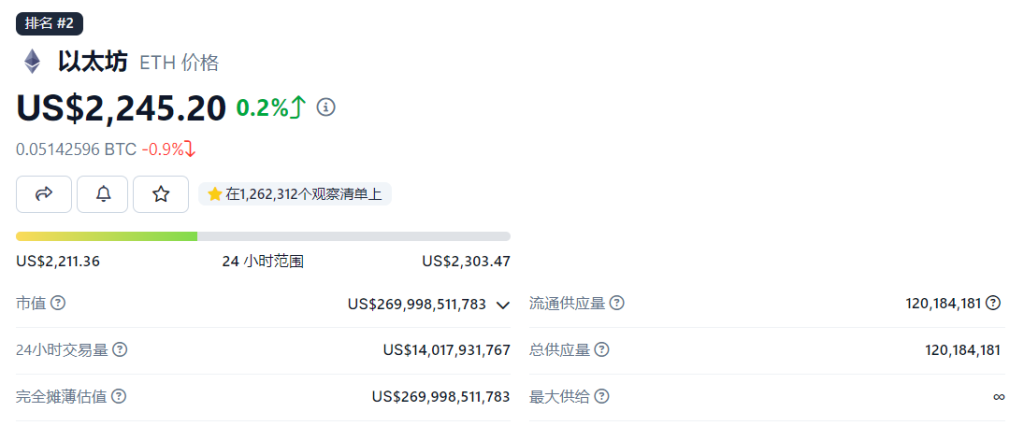
Speculation 2: Interest-Bearing Assets as the Emerging Standard
The shift to interest-bearing assets, particularly interest-bearing stablecoins like sDAI, in place of mainstream stablecoins, has traditionally been gradual. In the airdrop campaigns of Rollups like Blast and Manta, interest-bearing ETH and stablecoins, have become almost standard offerings. If more Rollups adopt interest-bearing assets as part of their strategies, it could significantly contribute to expanding the user base and establishing new investment habits within the crypto community. Rollups that integrate yield-generating assets into their ecosystems can directly benefit the issuers of these assets. The partnerships between Blast and entities like Lido and MakerDao, and between Manta and Stakestone and Mountain Protocol, exemplify how such collaborations can be mutually beneficial.
Speculation 3: Rollups Overtaking Layer1 Market Share
The user experience between Rollups and traditional L1 blockchains has become nearly indistinguishable. The current cycle in the blockchain space might mirror the previous Layer1 public chain wave but with a focus on sovereign Rollups. In their competitive landscape, Rollups are poised to contest directly with Layer1s for user base and capital. Additionally, rapidly emerging native dapps on these Rollups offer significant opportunities. For instance, Manta’s lending project, LayerBank, with a deposit volume exceeding $300 million, demonstrates the potential for Rollups to host top-tier projects, rivaling those on established platforms like Arbitrum.
While there is optimism about the swift advancement and potential dominance of Rollups in the blockchain market, it is essential to remain mindful of the risks.
Challenges and Risks in the Rollup Summer Narrative
The principal challenge for new Rollups is smoothly transitioning from the initial launch phase, which often involves attracting capital via token airdrop incentives, to a sustainable growth phase. The latter requires more complex strategies to ensure long-term user engagement and capital retention. Several Layer1 blockchains in the previous cycle attempted similar strategies, such as launching large-scale incentive funds to attract top DeFi projects on Ethereum. These DeFi platforms then redistributed these incentives to their users, initially spurring significant business growth, but the impact often diminished over time as similar strategies became widespread across various public chains.
Even established Rollups like Arbitrum and Optimism continue to use their tokens as subsidies for ecosystem projects, which in turn allocate these to end-users to maintain activity and capital in their platforms. For instance, Arbitrum’s recent round of incentives exceeded 70 million $ARB tokens, valued at over $140 million.
Considering that Rollup Summer is still in its initial, embryonic stage, the future is shrouded in uncertainty. Crypto investors must pay attention to the evolving strategies and development of new Rollup projects.



